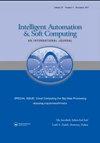Employing a Fuzzy Approach for Monitoring Fish Pond Culture Environment
IF 2
4区 计算机科学
Q2 Computer Science
引用次数: 2
Abstract
This study builds an automatic monitoring system for the fish pond culture environment. The purpose of this study is to reduce culture costs, including those resulting from labor costs and natural disasters, and make it easier for culturists to manage their fish ponds. With the proposed system, physical indicators of water quality are extracted by temperature, dissolved oxygen, and pH sensing modules; the heater, submerged motor pump, air pump, feeding trough, and LED illuminating lamp are controlled to improve the water quality and reduce labor. The wireless sensor network (WSN) is used as the signal transmission architecture between the sensor nodes, the control nodes, and the computer, where the human– machine interface is used for display, recording, and operation. In order to make the system more efficient and accurate, the fuzzy theory is used for fuzzy inference of the sensed signal, which enables the controlled load to be optimized and combined with the WSN so that the real-time information of the fishponds can be made available to culturists through mobile devices or remote platforms. The grid and storage battery are used as an uninterruptible power supply (UPS) to alternately power the sensors. The experimental results show that the fish pond culture environment can be accurately and stably monitored. The proposed monitoring system is constructed using a network of sensors, and it achieves precise judgment and real-time control. Based on the current situation, the system instantly turns on the hardware device to change the environment as needed.采用模糊法监测鱼塘养殖环境
本研究建立了鱼塘养殖环境自动监测系统。本研究的目的是为了降低养殖成本,包括人工成本和自然灾害造成的成本,使养殖户更容易管理他们的鱼塘。该系统通过温度、溶解氧和pH传感模块提取水质物理指标;加热器、浸没式电机泵、气泵、进料槽、LED照明灯控制,改善水质,减少人工。无线传感器网络(WSN)作为传感器节点、控制节点和计算机之间的信号传输体系结构,其中人机接口用于显示、记录和操作。为了提高系统的效率和准确性,利用模糊理论对传感信号进行模糊推理,使控制负荷得到优化,并与WSN相结合,使养鱼池的实时信息可以通过移动设备或远程平台提供给养殖者。电网和蓄电池作为不间断电源(UPS),交替为传感器供电。实验结果表明,该方法可以准确、稳定地监测鱼塘养殖环境。该监测系统采用传感器网络构成,实现了精确判断和实时控制。系统根据当前的情况,即时打开硬件设备,根据需要改变环境。
本文章由计算机程序翻译,如有差异,请以英文原文为准。
求助全文
约1分钟内获得全文
求助全文
来源期刊

Intelligent Automation and Soft Computing
工程技术-计算机:人工智能
CiteScore
3.50
自引率
10.00%
发文量
429
审稿时长
10.8 months
期刊介绍:
An International Journal seeks to provide a common forum for the dissemination of accurate results about the world of intelligent automation, artificial intelligence, computer science, control, intelligent data science, modeling and systems engineering. It is intended that the articles published in the journal will encompass both the short and the long term effects of soft computing and other related fields such as robotics, control, computer, vision, speech recognition, pattern recognition, data mining, big data, data analytics, machine intelligence, cyber security and deep learning. It further hopes it will address the existing and emerging relationships between automation, systems engineering, system of systems engineering and soft computing. The journal will publish original and survey papers on artificial intelligence, intelligent automation and computer engineering with an emphasis on current and potential applications of soft computing. It will have a broad interest in all engineering disciplines, computer science, and related technological fields such as medicine, biology operations research, technology management, agriculture and information technology.
 求助内容:
求助内容: 应助结果提醒方式:
应助结果提醒方式:


